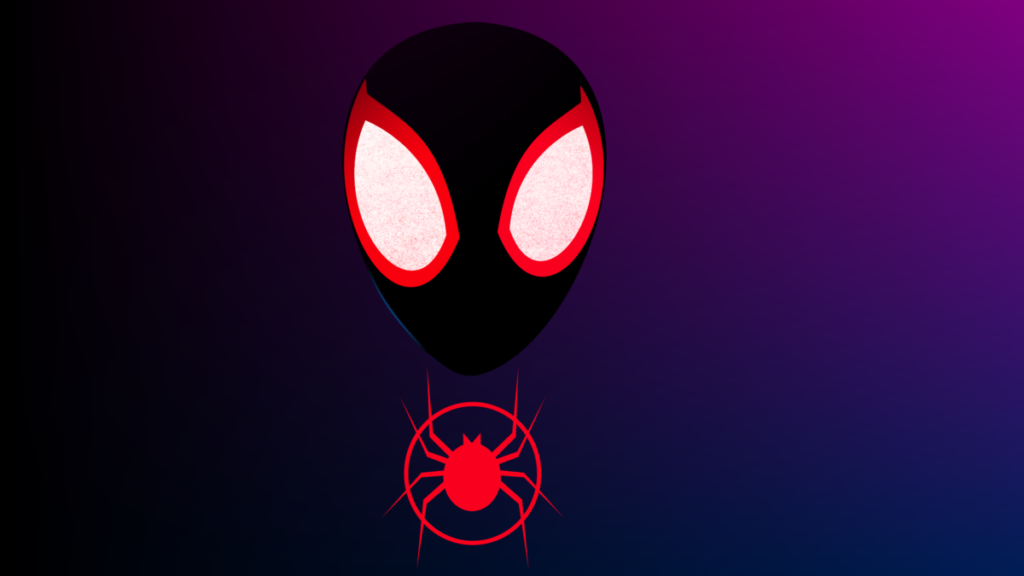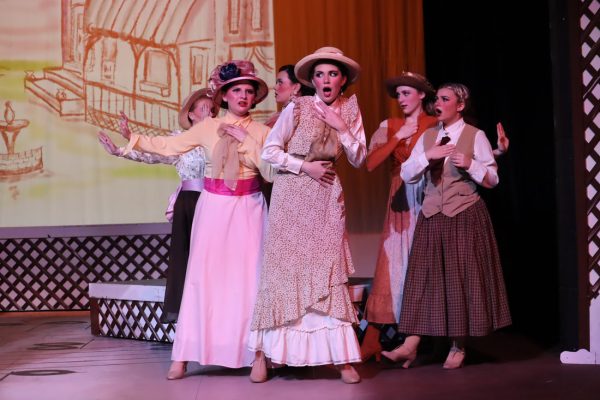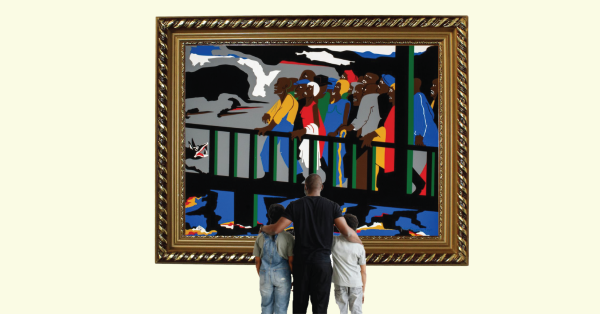OPINION: “Into the Spider-Verse” encourages animators to take a leap of faith
Featured image citation: “Spider-Man Miles Morales Minimalist Poster” by Abijithka on Wikimedia Commons is licensed under Creative Commons Attribution-Share Alike 4.0 International license. No changes were made to the image. Use of this photo does not indicate photographer endorsement of this article.
January 28, 2019
When the first trailer was released for “Spider-Man: Into the Spider-Verse,” and the reactions poured in, many knew that this movie was not going to be like any other animated movie.
Since that day in June 2018, the hype for the movie grew bigger with every passing week, and while it got beat at the box office due to the release of “Aquaman,” it’s hard work and risk taking has earned the movie multiple wins for best animated feature film from award shows such as the Golden Globes, and even an Oscar nomination.
This unique take on the classic Spider-Man is not only a call for diversity with its subject, but it’s a reminder and calling to upcoming and current animators about the powers of animation and what its future can look like.
Introducing Miles
When Sony released the first trailer for “Into the Spider-Verse” a major question arose from many of the people watching it: Who is this Spider-Man that clearly isn’t Peter Parker?
Miles Morales is a half African-American and half Puerto Rican teenager who roughly follows the same story as Peter Parker, but only takes over as Spider-Man after witnessing Peter’s death. Miles first appeared in “Ultimate Comics: Fallout #4,” which came out in Aug. 2011. While he has appeared in other comics and in Disney XD’s “Ultimate Spider-Man,” he had never gotten a proper big screen debut until “Spider-Verse” was announced.
With Miles being the main protagonist instead of a character like Peter Parker, who has been through multiple television shows, movies and comic storylines, “Spider-Verse” was able to tell a Spider-Man story without it feeling overdone. It isn’t just the characters that make this movie stand out, though. It’s the unique animation style and cinematography used that make it such a groundbreaking animated movie.
Animated with a touch of live action
Right off the bat, “Spider-Verse’s” unique animation style of two dimensional (2D) art mixed with three dimensional (3D) art gives it the feel of a moving comic book, helping encompass the viewer into Miles’s world. The scenery uses the 3D blue and red lines and the comic book pointillism effect to create depth in addition to the normal shadows that would be visible in any animated film.
During multiple scenes throughout the movie Times Square is shown and, the billboards look like a neon comic book page with its style and color choice.
The animators use the variety of animation to their advantage and keep the characters from the other dimensions in their original animation. Examples of this would be how Spider-Noir has a black and white comic book look, with sharp and dramatic lines, and Spider-Ham’s “Looney Tunes” look. With their use of varying animation styles they help further enforce the idea of a spider-verse with multiple dimensions that are each different and unique from one another.
With the animation alone, “Spider-Verse” is proving to be a groundbreaking animated movie, but the creators take it another step forward with its cinematography. Most cinematography in animated movies are still shots that follow the characters, and while this movie does that, many shots look as though there is an actual cameraman making decisions on the spot. In the “Leap of Faith” scene you can see the shakiness of the camera when he first jumps off the building, which symbolizes his fear of letting go.
A few seconds later though he stops freaking out and balances along with the camera. At the beginning of the same clip, the camera looks down on Miles with some shake to the camera to show he’s nervous, knowing the extremity of the situation he’s now in.
While these are two small examples picked from a two hour long movie, it’s clear that “Spider-Verse” uses techniques to push it above the rest of the animated movies that are running against it this award season. While it is currently doing great and has won many of the awards it has been nominated for, it’s a call for more diversity in animated films and for animators to take more risks in their movies.
Pushing for a leap of faith
One of the best parts about animation is that the limits as to what can and can’t be done are almost nonexistent. While many movies take this into account and use it to their advantage, animated movies tend to stick with one particular animation style and don’t mix it with any other styles or techniques. Taking the risk of mixing them may seem too risky for animators, but I believe “Spider-Verse” has opened that door and what people want to see more of.
While it’s nice to watch a Disney or Pixar animated movie, they all look very similar to one another despite being different stories, because the animation techniques are all the same. It may seem a little discouraging for young artists who are looking into animation if they don’t want to create a movie that looks like every other movie. This movie though has opened the door of possibilities when it comes to animators, because they now have the safety net of this movie to look back to and decide that maybe changing how things look isn’t such a bad idea.
Overall, “Spider-Man: Into the Spider-Verse” has captured the hearts of critics and fans alike for its interesting story and breathtaking visuals. If it happens to win at the Oscars on Feb. 24, it will further validate that maybe to reach your full potential, all you need is a leap of faith.
Congratulations to the #SpiderVerse cast and crew on their #Oscars nomination for Best Animated Feature! ?️? pic.twitter.com/sazJ2zJBQZ
— Spider-Man: Into The Spider-Verse (@SpiderVerse) January 22, 2019
Featured image citation: “Spider-Man Miles Morales Minimalist Poster” by Abijithka on Wikimedia Commons is licensed under Creative Commons Attribution-Share Alike 4.0 International license. No changes were made to the image. Use of this photo does not indicate photographer endorsement of this article.


















